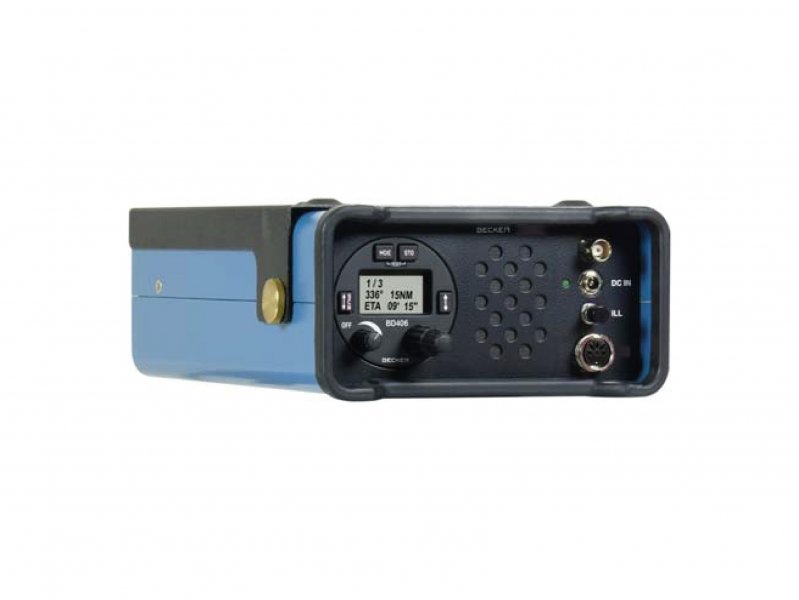Types of emergency locator beacons
by Admin
Posted on 25-09-2023 12:34 PM

An
emergency
position-indicating radiobeacon (epirb) is a type of emergency locator beacon for commercial and recreational boats, a portable, battery-powered radio transmitter used in emergencies to locate boaters in distress and in need of immediate rescue. In the event of an emergency, such as a ship sinking or medical emergency onboard, the transmitter is activated and begins transmitting a continuous 406 mhz distress radio signal, which is used by search-and-rescue teams to quickly locate the emergency and render aid. The signal is detected by satellites operated by an international consortium of rescue services, cospas-sarsat , which can detect emergency beacons anywhere on earth transmitting on the distress frequency of 406 mhz.

Radio-frequency beacon used to locate airplanes, vessels, and persons in distress an emergency locator beacon is a radio beacon , a portable battery powered radio transmitter , used to locate airplanes, vessels, and persons in distress and in need of immediate rescue. Various types of emergency locator beacons are carried by aircraft, ships, vehicles, hikers and cross-country skiers. In case of an emergency, such as the aircraft crashing, the ship sinking, or a hiker becoming lost, the transmitter is deployed and begins to transmit a continuous radio signal, which is used by search and rescue teams to quickly find the emergency and render aid.
Although they all work in the same way, different beacons are designed for use in different environments. There are three types of beacons: most personal locator beacons work as an emergency device only – sending a signal when you need help. But some models also provide messaging and tracking options. These devices allow for pre-set messages to be sent and may be able to receive text messages and link up to social media accounts so your friends can follow your progress. The major drawback of these devices is that they operate on a subscription service. And most don't have the 121.
Emergency beacons, or emergency locator beacons, are an essential piece of safety equipment that every skipper should have onboard their vessel; they use gps to connect to the emergency coastguard in the event of an emergency. Here at marine super store we stock both epirb emergency beacons and plbs and personal ais by mcmurdo and ocean signal. We know if a bit can be daunting for pick the right safety beacons with such as vast range of models available. If you need more information about the different types of safety beacons and their key differences, check out our guide to safety beacons.
Search-and-rescue response
Plbs are smaller land-based cousins of emergency position indicating radio beacons (epirbs) used by boaters. When you activate a plb, it transmits a powerful distress signal that’s received by a global system of satellites.
 In the u. S. , those distress signals are monitored by noaa (national oceanic and atmospheric administration). After receiving your transmission, the satellite system relays your distress call to a network of response agencies, which ultimately results in your plea for assistance reaching a local search and rescue organization. Plbs also utilize another satellite network to get a location fix. In addition, most plbs today can provide rescuers with gps-provided coordinates to pinpoint your location even more precisely.
In the u. S. , those distress signals are monitored by noaa (national oceanic and atmospheric administration). After receiving your transmission, the satellite system relays your distress call to a network of response agencies, which ultimately results in your plea for assistance reaching a local search and rescue organization. Plbs also utilize another satellite network to get a location fix. In addition, most plbs today can provide rescuers with gps-provided coordinates to pinpoint your location even more precisely.
Choose the right device for your activity and location (see ‘ types of emergency alerting devices ’). For remote messaging and other non-urgent features, you’ll want a send. But it shouldn’t be relied on as your only emergency alerting device. Wherever you’ll be going, take a plb or epirb too. These are the best choice for getting help fast in an emergency. • make sure any plb or epirb you buy is nz-coded so it can be registered with new zealand’s rescue co-ordination centre, providing the fastest response to your distress signal. • if you’re travelling overseas, check what devices are permitted.
How long does it take to be rescued the time it takes for search and rescue personnel to reach you depends on a number of factors, including the weather, terrain and accessibility of your location. The more remote the location of the distress incident, the longer the response time. In all instances, be prepared to survive. Satellites cannot detect beacons through mountains, trees or buildings. If your beacon has not been deployed correctly with the aerial vertical in a clear open area or you are located in a valley, geostationary (geo) satellites are unlikely to see you. In these cases, you must wait for polar-orbiting (leo) satellites to pass overhead, which may take several hours.